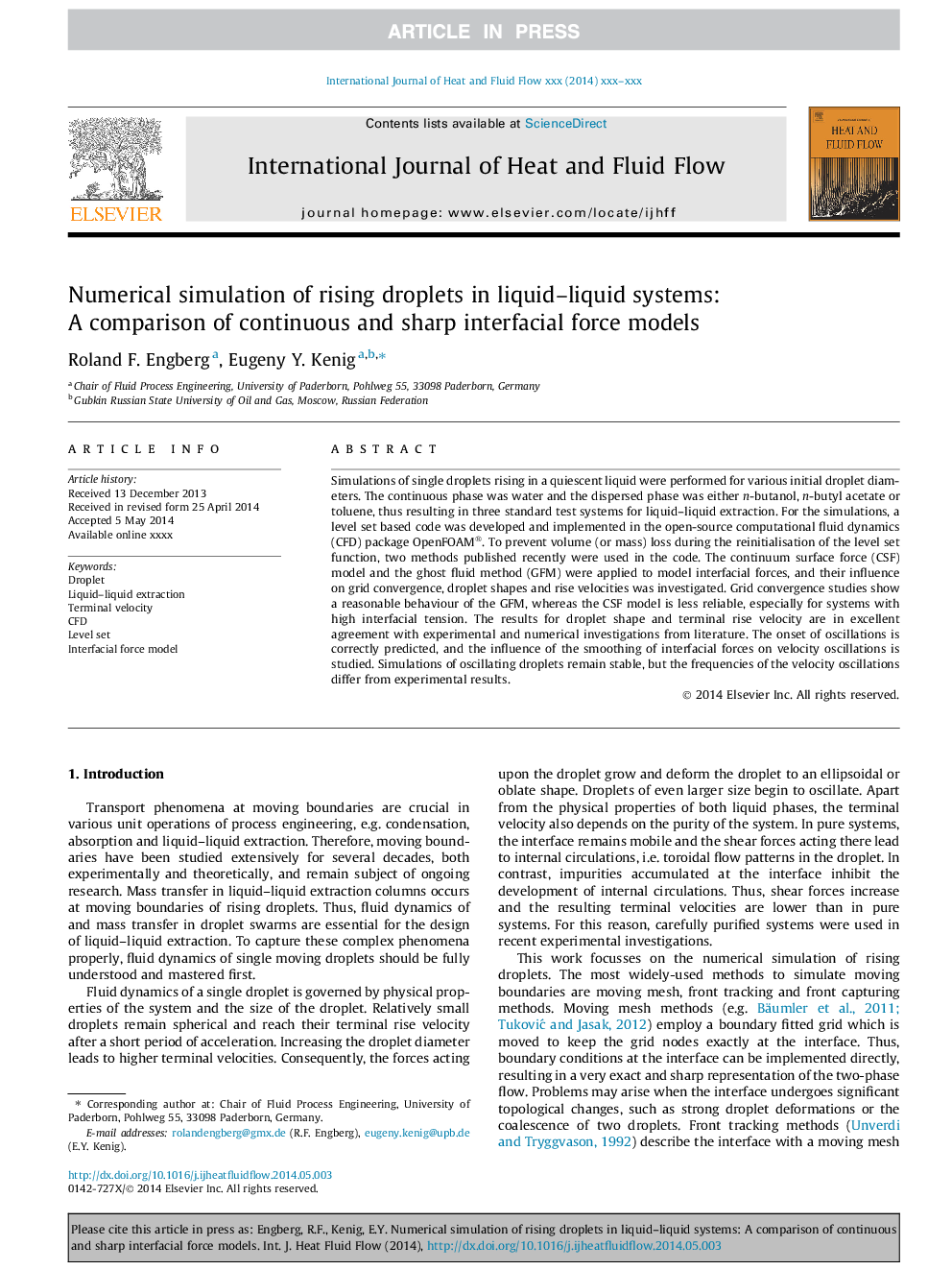| Article ID | Journal | Published Year | Pages | File Type |
|---|---|---|---|---|
| 7053603 | International Journal of Heat and Fluid Flow | 2014 | 11 Pages |
Abstract
Simulations of single droplets rising in a quiescent liquid were performed for various initial droplet diameters. The continuous phase was water and the dispersed phase was either n-butanol, n-butyl acetate or toluene, thus resulting in three standard test systems for liquid-liquid extraction. For the simulations, a level set based code was developed and implemented in the open-source computational fluid dynamics (CFD) package OpenFOAM®. To prevent volume (or mass) loss during the reinitialisation of the level set function, two methods published recently were used in the code. The continuum surface force (CSF) model and the ghost fluid method (GFM) were applied to model interfacial forces, and their influence on grid convergence, droplet shapes and rise velocities was investigated. Grid convergence studies show a reasonable behaviour of the GFM, whereas the CSF model is less reliable, especially for systems with high interfacial tension. The results for droplet shape and terminal rise velocity are in excellent agreement with experimental and numerical investigations from literature. The onset of oscillations is correctly predicted, and the influence of the smoothing of interfacial forces on velocity oscillations is studied. Simulations of oscillating droplets remain stable, but the frequencies of the velocity oscillations differ from experimental results.
Related Topics
Physical Sciences and Engineering
Chemical Engineering
Fluid Flow and Transfer Processes
Authors
Roland F. Engberg, Eugeny Y. Kenig,
